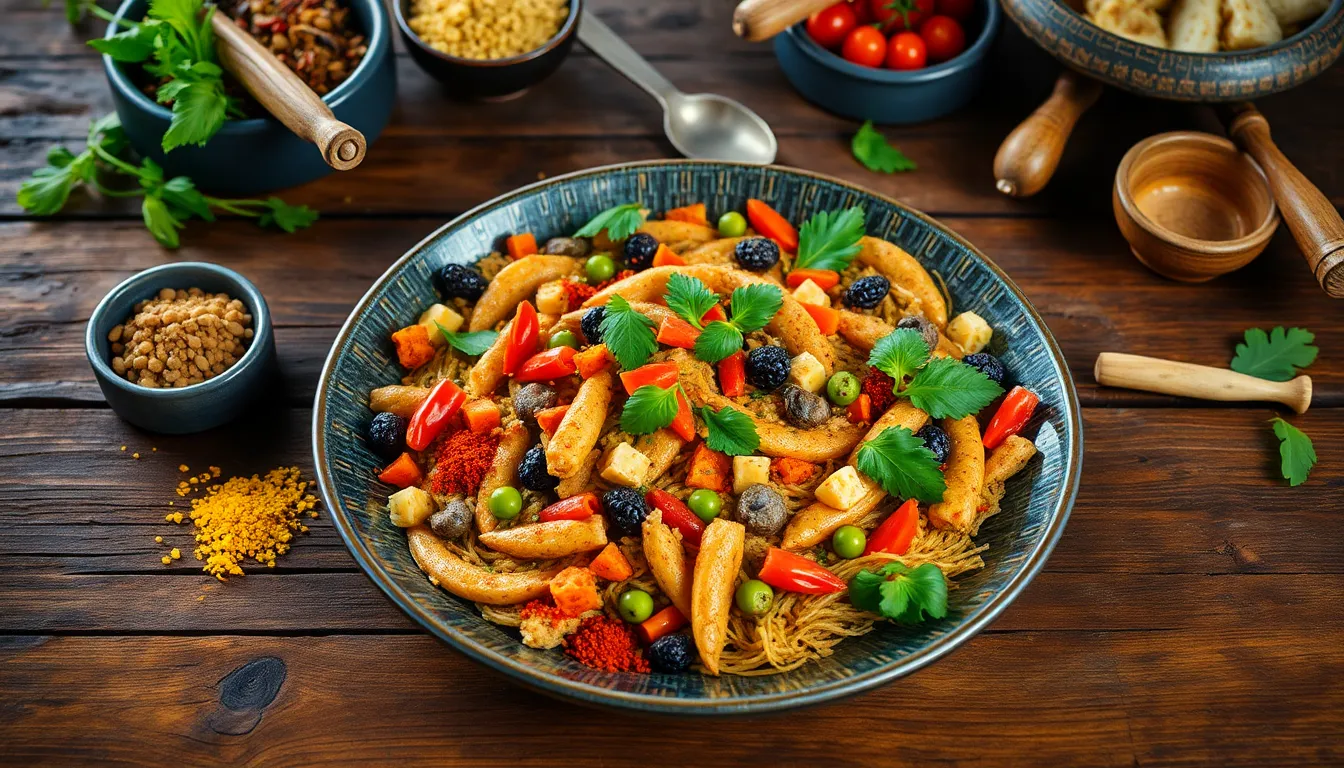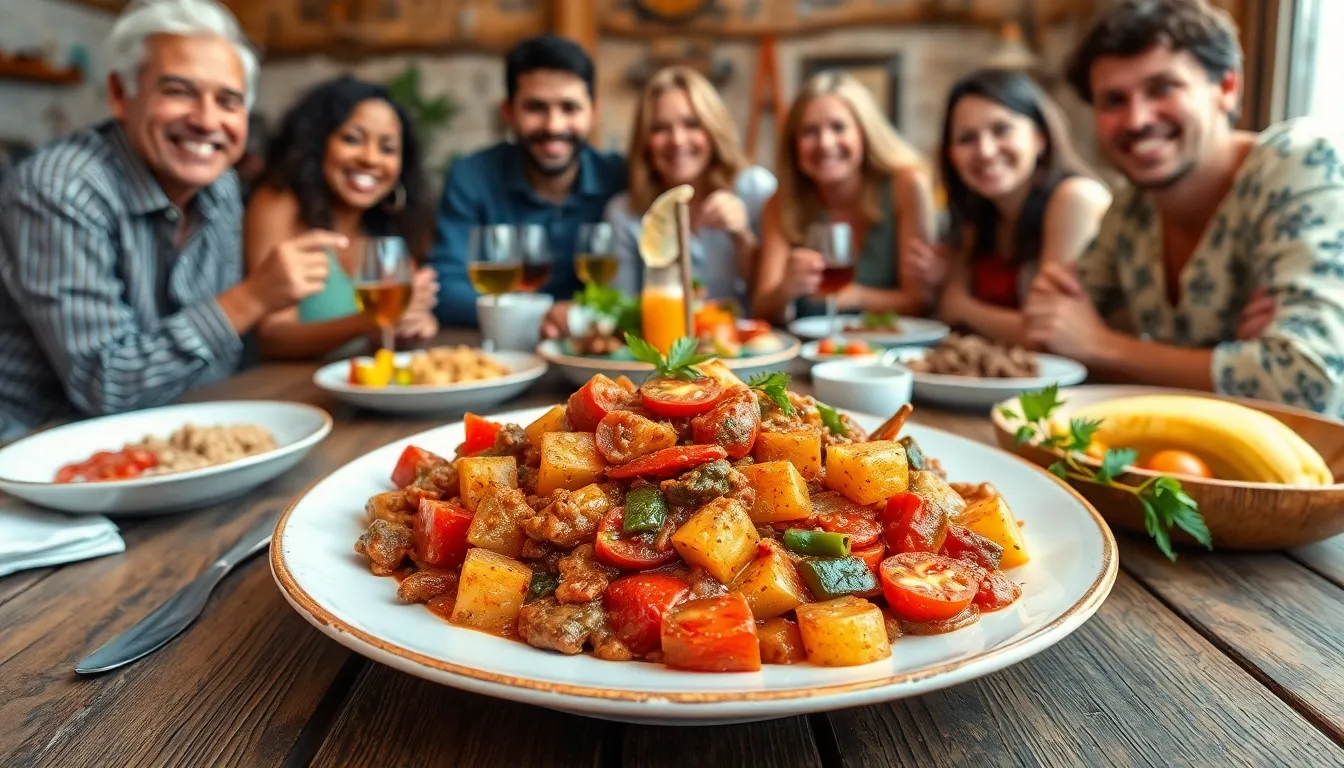In the vibrant tapestry of cultural delicacies, few dishes spark curiosity quite like babaijabeu. This lesser-known culinary gem is not just a feast for the stomach but also a delightful adventure for the taste buds. Picture a dish that combines rich flavors with a dash of mystery—it’s like a culinary treasure hunt right on your plate!
Table of Contents
ToggleOverview of Babaijabeu
Babaijabeu represents a distinctive dish cherished for its rich taste and cultural significance. Known for blending various spices and ingredients, it’s a celebration of culinary creativity. This dish often features a combination of savory and sweet components, enticing those seeking new flavors.
Traditionally, babaijabeu originates from regions rich in culinary heritage, where local ingredients play a crucial role in its preparation. Chefs craft it using techniques passed down through generations, ensuring authenticity. The preparation typically involves slow cooking, which enhances the flavors and aromas, making each bite memorable.
Adventurous food lovers appreciate babaijabeu for its complexity and exciting flavor profile. It often pairs wonderfully with sides that complement its taste, such as rice or flatbread. Enthusiasts frequently share their experiences, discussing how the dish can surprise their taste buds with every bite.
For those unfamiliar, babaijabeu offers a wonderful opportunity to explore new gastronomic territory. Families and friends often gather to enjoy this dish together, creating cherished memories. The act of sharing babaijabeu at gatherings fosters connections and encourages culinary exploration among guests.
Overall, babaijabeu invites diners into a world of flavor, tradition, and community, making it a beloved choice for many. Each serving brings an adventure that highlights the beauty of food, showcasing its ability to bring people together while satisfying diverse palates.
History and Cultural Significance

Babaijabeu boasts a rich history rooted in regional culinary traditions. Its unique blend of flavors reflects the cultural tapestry from which it originates.
Origin of Babaijabeu
Originally, babaijabeu emerged from regions renowned for their diverse culinary practices. Ingredients like locally sourced spices and fresh produce played a crucial role in its creation. Family recipes passed down through generations ensured traditional cooking methods and flavors remained intact. Many communities celebrate this dish during festivals and gatherings, emphasizing its importance within their cultural identity. The dish’s name, deeply embedded in local languages, signifies love and celebration, further enriching its history.
Evolution Over Time
As culinary preferences shifted, babaijabeu adapted to meet modern tastes. Influences from global cuisines introduced new ingredients while maintaining its traditional essence. Innovative chefs began experimenting with variations, resulting in diverse versions that cater to contemporary palates. Contemporary presentations reflect artful plating techniques, enhancing visual appeal and inviting diners to explore flavors. Despite these changes, babaijabeu remains a symbol of nostalgia and cultural pride, ensuring its place in both traditional and modern dining experiences.
Features and Characteristics
Babaijabeu showcases a blend of unique and traditional characteristics that set it apart in global cuisine. Its rich flavor profile draws from carefully selected ingredients and meticulous preparation methods.
Unique Ingredients
Locally sourced spices contribute to babaijabeu’s signature taste. These spices often include cumin, coriander, and turmeric, enhancing both aroma and depth. Fresh produce is equally significant, with vegetables like tomatoes, peppers, and onions providing essential flavor elements. Additives such as dried fruits, nuts, and regional herbs create a distinctive balance of savory and sweet. Cultural significance is evident as certain ingredients reflect the local agricultural heritage. The combination of these elements results in a culinary experience that captivates the palate.
Preparation Methods
Traditional preparation methods elevate babaijabeu’s authenticity. Slow cooking techniques allow flavors to develop deeply, ensuring a rich and cohesive dish. Cooking in earthenware or heavy-bottomed pots retains moisture and enhances taste. Techniques like marination allow meats or vegetables to absorb spices fully, creating harmonized flavors. Some variations incorporate grilling for added texture, creating delightful contrasts. Finally, serving babaijabeu with accompaniments like rice or flatbread enhances its overall dining experience, inviting communal enjoyment.
Popular Variations
Babaijabeu showcases numerous variations influenced by regional traditions and contemporary culinary trends. These diverse interpretations capture the essence of this dish while catering to different palates.
Regional Differences
In various regions, babaijabeu incorporates unique local ingredients and preparation techniques. For instance, North African versions often use preserved lemons and olives, enhancing flavor complexity. In South Asian adaptations, spices like garam masala and fresh herbs brighten the dish. Mediterranean takes frequently feature ingredients such as eggplant and chickpeas, adding depth and texture. Regional differences provide each version with its distinctive character while retaining the foundational qualities of babaijabeu.
Contemporary Twists
Modern chefs explore innovative twists to babaijabeu, integrating global flavors and cooking methods. For example, some versions utilize sous-vide techniques for enhanced precision in cooking meats, resulting in tender textures. Others emphasize plant-based ingredients, attracting vegetarian and vegan diners. Creative plating techniques elevate the dish’s aesthetic appeal, with vibrant garnishes drawing attention to its unique attributes. Each contemporary twist introduces new experiences while honoring the dish’s traditional roots.
Health Benefits
Babaijabeu offers an array of health benefits that contribute to a balanced diet. Rich in vegetables like tomatoes, peppers, and onions, this dish provides essential vitamins and minerals. Antioxidants present in these ingredients support overall health, aiding in the reduction of inflammation and promoting better immune function.
Inclusion of locally sourced spices such as cumin and turmeric boosts the dish’s anti-inflammatory properties. These spices are linked to various health benefits, such as improved digestion and enhanced metabolism. Nutrient-dense dried fruits and nuts add healthy fats and fiber, contributing to heart health and improved satiety.
Traditional cooking methods like slow cooking preserve the nutritional value of the ingredients. It allows for the development of deep, complex flavors without using excessive fats or sugars. Communities benefit from the communal aspect of sharing babaijabeu, promoting social interactions that enhance mental well-being.
Many variations emphasize plant-based ingredients, catering to vegetarians and vegans while ensuring nutrient intake remains high. Innovative adaptations maintain the dish’s integrity while appealing to contemporary dietary needs. Engaging in the preparation of babaijabeu fosters a deeper appreciation for food and its cultural roots, promoting mindful eating habits.
Overall, savoring babaijabeu not only delights the palate but also supports a nutritious and healthy lifestyle. Each component works together, making it a quintessential choice for those seeking flavorful and beneficial culinary experiences.
Babaijabeu stands out as a culinary gem that invites exploration and celebration. Its rich flavors and cultural significance create a dining experience that’s both nostalgic and innovative. As food lovers continue to share their experiences with this dish, it fosters connections among friends and families.
The adaptability of babaijabeu ensures it remains relevant in today’s diverse culinary landscape while honoring its traditional roots. With health benefits and a variety of regional adaptations, it appeals to a wide audience. Embracing babaijabeu not only enriches the palate but also nurtures cultural appreciation, making it a delightful choice for any dining occasion.



